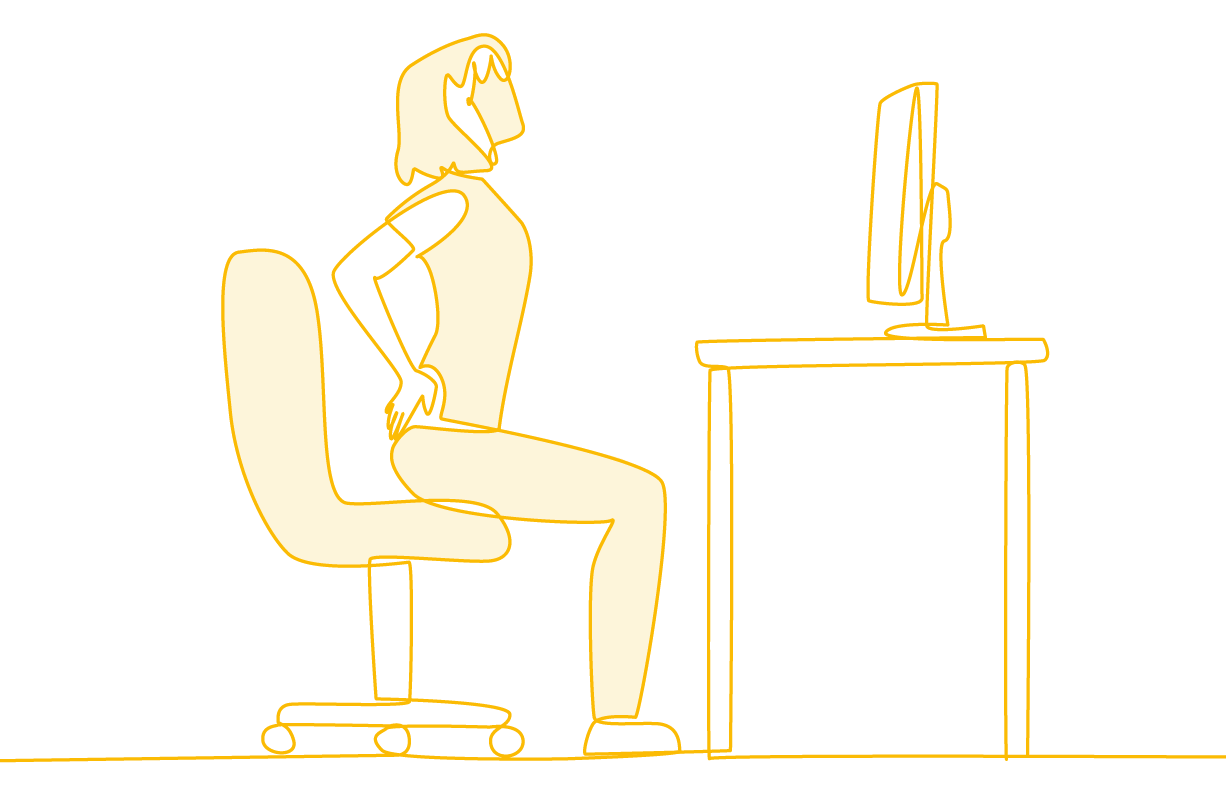Ergonomics
Musculoskeletal injuries (MSIs) are the most common type of work-related injury in British Columbia. Exposure to workplace factors such as the use of force, repetitive movements, and poor posture can lead to MSIs, including sprains, strains, inflammation, and conditions like tendonitis, bursitis, and carpal tunnel syndrome.
MSI risks can be present in any workplace, and employers are required to assess, eliminate, or minimize risks while providing workers with education and training. Ergonomics helps reduce MSI risk by improving the interaction between people and their physical environment.

Ergonomic Risk Assessment
-
Complete an Assessment
The ergonomic risk assessment identifies the risk level of physical demands that may lead to musculoskeletal injuries (MSIs) in your workplace. If ergonomic risk factors for MSI are present, the employer must conduct an ergonomic risk assessment. In a medical clinic, patient handling and computer workstation ergonomics are the primary areas of concern.
Musculoskeletal Injury Prevention
-
Complete Review of Risk Control
To prevent MSI in the workplace, employers need to implement controls to eliminate or minimize risks. There are different ways to control MSI risks, such as adjusting the physical work environment, equipment, or materials, and improving work organization, resourcing, and staff scheduling.
We have provided a rack card with ergonomic tips for computer workstations, designed as a quick reference for medical clinic staff.
Please refer to pages 27-29 of the ‘WSBC – How to Make Your Workstation Fit You’ document for a comprehensive computer workstation ergonomics checklist.
-
Complete Review of Worker Education and Training
Employers must ensure that workers are educated so they can identify risks related to their work, recognizing signs and symptoms of injury, and understanding the potential health effects of MSI. They must also ensure that workers are trained in how to prevent MSI at work.
Did you know?
-
Did you know?
Incorrect lifting and handling of heavy or bulky objects is a major cause of MSI sprains, strains, neck and back injuries, cuts, bruises, broken bones, and hernias. Slips, trips, and falls can be especially common in a clinic setting.
Tips to Reduce the Risk of MSI
-
Sprain and Strain
- Avoid long periods of repetitive movement and take breaks.
- Avoid awkward positions. Organize your work area so that everything is easy to reach.
- Avoid twisting your body. Move your feet instead of twisting your body.
-
Lifting and Handling
- If possible, use carts to move heavy objects around the clinic instead of lifting or carrying them.
- When lifting heavy objects, hold the object as close to your body as possible.
- Avoid twisting your back while lifting.
- Ask for help.
-
Slips, Trips, and Falls
- Keep hallways and common areas free of clutter.
- Ensure appropriate lighting.
- Clean up spills immediately or mark the area with a “wet floor” sign to warn others.
- Make sure that you can see where you are going when carrying large items (use a cart when possible).
Additional Resources
Legal Requirements
Web Resource
WorkSafeBC – MSI Risk Assessment worksheet
Web Resource
WorkSafeBC How to make your workstation fit you
Web Resource
WorkSafeBC Preventing Musculoskeletal Injury
Web Resource
WorkSafeBC – Understanding the Risks of MSI
